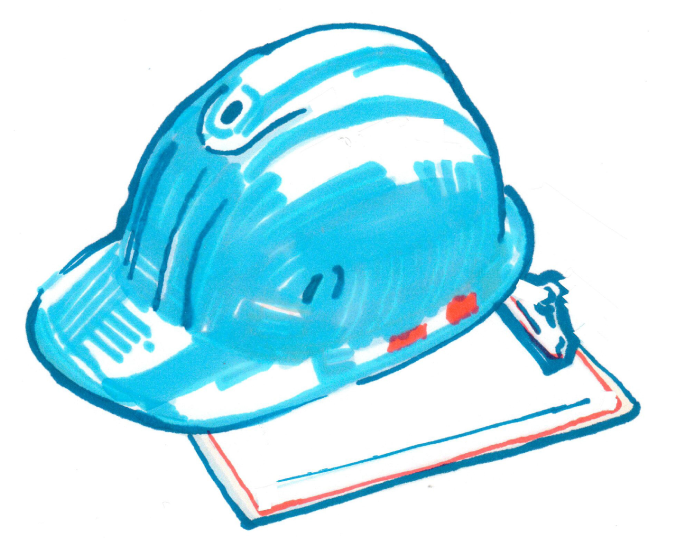Building a Brand to Last
A strong district brand requires constant maintenance—so how can you keep everyone on the same page?


BUILDING A BRAND TO LAST
Brand maintenance strategies for school leaders
Imagine building a new elementary school. You’ve done everything from working with architects to deciding on paint colors until, finally, the building is finished. But after opening the doors to that new school, you do nothing to maintain it. Time passes, and the paint starts chipping. The plumbing fails. Windows and tiles crack.
When we talk about building a strong brand for your district, it’s easy to assume that creating the brand is the primary goal. And while it’s crucial to identify your core values and develop a strong logo, that’s not enough. Building a brand to last requires maintenance.
So once you’ve constructed your district’s brand, how do you maintain it? How do you keep everyone on brand? “It can be a nightmare to convince everybody to use the correct version of every brand detail,” says Ginger Smith, executive director of marketing and communications at Michigan’s Traverse City Area Public Schools (TCAPS). “You don’t see universities showcasing thousands of logos and mascots, right? Our brand needs to be reined in. So we try to be clear about the importance of consistency and ensuring that our brand represents who we are in a unified way.”
Of course, that’s easier said than done. “How do you control it?” asks Stacy Jennings, executive director of communications for Savannah-Chatham County Public School System (SCCPSS) in Georgia. “We’re struggling with that,” she says—which is why the district recently hired a brand director and is gearing up for a brand audit. “We want to identify every brand touch point. Where do they live? Who owns them?”
Building a strong brand can feel like a slippery, never-ending project—because it is. It requires you to do everything from triple-checking logos to convincing staff members that having a strong district brand matters. Luckily, the strategies we’ll offer here can make this fierce challenge a bit more manageable.
Have well-developed brand assets.
Maintaining a strong brand is almost impossible if you don’t first clarify and streamline your brand assets. Do you have a trademarkable logo? Have you clearly documented the exact Pantone colors to use? What about your fonts? Email signatures? Letterhead? It's important not only to make decisions about these fine details, but to document them in easily accessible brand guidelines.
TCAPS’ award-winning communications toolkit answers all these questions and more, providing details about everything from color choices to grammar guidance (TCAPS does, in fact, use the Oxford comma). Not only that, every district and school logo can be downloaded in four different file formats straight from the toolkit. Or, if staff members prefer, they can access branding assets through the staff website, where everything is organized by school. “Whether they want to make a slideshow, use letterhead or write a memo, everything you could possibly imagine is there,” Smith says. Similarly, according to Jennings, SCCPSS has its own online repository of downloadable, district-approved logos. The repository details logo use guidelines and even provides a description of the significance of the district logo.
Clear brand guidelines may not be where the work ends, but they are where the work begins. And the more detailed your guidelines are, the more likely your staff is to stay on brand. Think of these guidelines as your brand’s foundation. You can’t live inside a foundation, but you can’t build a house without one either.

Make success easy.
Setting your staff up for success means removing barriers—and a consistent obstacle for educators is time. Unfortunately, limited capacity is the enemy of brand consistency. When staff members are pressed for time, they’re more likely to quickly pick any old red for their newsletter, or copy and paste the district logo into their email signature. So how can you make it easy for staff members to get (and stay) on brand?
To acclimate TCAPS staff to the district’s brand guidelines, Smith and team launched a six-month internal email campaign, providing information on everything from how to update email signatures to the do’s and don’ts of photography. Crucially, each email was tagged with either “read," "act" or "respond” so that staff would immediately know each email’s purpose. And the timeline for the campaign was built with staff’s shifting capacity in mind. “For example, we shared light topics right before spring break because that’s when everyone’s exhausted,” Smith says.
At the beginning of the following school year, Smith’s team handed out business cards with a QR code leading back to the district’s brand assets. Now, if a staff member has a brand question, all they have to do is scan the code.
Another way to set your staff up for success is to provide training. According to Jennings, the task of building-level communication often falls on someone who already has a long list of duties. “Communicating becomes one more thing they aren’t being paid for, so it’s hard for them to make it a priority,” she says. “But communicating with parents is a super high priority.” That’s why SCCPSS is working on implementing a media boot camp to train staff on things like how to use branded templates or talk to the media.
But Jennings’ primary goal is to train staff to think of every interaction as an opportunity to strengthen the district’s brand. In a 2022 SchoolCEO study, 28% of non-teaching staff and 21% of teachers reported that they had never been trained on brand and messaging—and Jennings doesn’t want SCCPSS to be part of that statistic. So how does daily communication with parents and community members impact the district’s brand? What kinds of stories bolster the district’s brand? How can social media posts tell brand-building stories? These are the questions Jennings hopes to dig into with her media boot camp. After all, staff can’t be expected to do these things successfully if they aren’t taught how.
Make failure hard.
Making it easy for your staff to stay on brand is one thing, but making it hard for them to go off brand is entirely another. If you wanted to make it easy for a student to pass their history test, you might provide them with a study guide. But if you wanted to make it hard for them to fail, then you might make the test open-book. Asking how you can make failure difficult will help you identify strategies and supports that you might not have considered otherwise.
For example, TCAPS uses master Google Docs for things like branded letterhead; as soon as staff open the document, they are immediately prompted to make a copy. “The margins are all set up with our preselected colors and fonts,” Smith explains. In other words, the templates’ default settings are already on brand. Individual staff members don’t have to choose to be on brand; in fact, they’d have to choose to go off brand.
TCAPS has also created branded Canva templates. “I feel like teachers everywhere use Canva,” Smith says. “If you simply put your letterhead out there expecting that everyone will start using it, they’re all still going to make documents all over the place in whatever program they already use.” But with branded Canva templates ready to go, staff now have half the work already done for them. “We give them the skeleton,” Smith says—meaning it would be more work to create an off-brand document.
Recognize and elevate your comms team as a resource.
At SchoolCEO, we’ve talked to hundreds of communications professionals, and we hear certain stories time and time again. One of them goes like this: You attend a school event, and at the door, a smiling student hands you a flyer. To your chagrin, it’s printed in the wrong colors, with a logo that looks like it was made using a version of Microsoft Paint from the ‘90s. And you wonder: Who made this? And why didn’t they ask for help?
The simple truth is that the person who made that flyer might not have known they could ask for help. In our 2024 study “A Seat at the Table,” conducted in partnership with the National School Public Relations Association, we asked communications professionals: “On a scale from 1-5, how well do you feel teachers and other staff not in administration understand what you do?” Only 3% of our respondents chose “very well,” while nearly 36% of respondents chose either “not at all” or “slightly.” This suggests that staff don’t truly understand what communications professionals do.
“There’s definitely an education process,” Jennings says. “Sometimes people will contact me saying they need a flyer the next day because they don’t know how long it takes to create something like that.” Even worse is when staff members go rogue, creating materials that aren’t ADA-compliant or even properly branded. “I find it interesting that someone in, let’s say, accounting might create a flyer,” Jennings says. “How much time did that person take from their assigned duties to create a design that I can’t use? That’s a waste of time, talent and treasure. I’d never go into the accounting department and tell them how to balance the books.”
Positioning your comms team as a resource to your staff and clarifying expectations around how to involve them in projects will pay dividends when it comes to keeping your district on brand. Consider setting up ongoing meetings between key staff members and your communications department. Even just one meeting a semester will help keep everyone on the same page. Of course, if you want your comms team to serve as a resource to your staff, it’s up to district leadership to ensure they have what they need to thrive.

Clarify the why.
As we’ve already mentioned, educators are overworked. Who could blame them if brand consistency isn’t their number-one priority? Giving your staff the resources and training necessary to stay on brand is one thing, but convincing them that staying on brand matters is entirely another.
According to Jennings, “the mountain we have to climb right now is convincing folks that a strong brand builds positive public perception.” And, as we’ve all seen, public perception can significantly impact a district’s ability to provide quality education. “It’s not really about the color of the logo or the tagline. It’s an emotional thing,” Jennings says. “When brands miss—when the perception of the brand and the reality of the brand don’t match—that’s when you see diminished returns. If you think of yourself as driving a Jaguar, but what you really drive is a 1996 Nissan Sentra, that’s a brand miss. And we can’t afford to miss. We can’t afford diminished returns because our investment is children.”
And when it comes to the impact a strong brand can have on a district’s ability to provide education, Smith would agree. “Brand builds credibility,” she says. “It builds trust with our stakeholders.” But that can’t happen unless everyone in the district buys in. In their communications toolkit, TCAPS has included documentation on what it means to be a good brand ambassador. “All TCAPS employees play an important role in how the community perceives Traverse City Area Public Schools,” their guidance reads. “Whether you are a bus driver, an administrative assistant, or a classroom teacher, what you say and do sets the tone for each and every interaction that a student, parent, or community member has with our school district.”
At the end of our call, Jennings told us a story: In 1969, a visitor at NASA headquarters met a janitor in the hallway. “What do you do here?” the visitor asked—to which the janitor responded, “I’m putting a man on the moon.”
“Everybody from the custodian to the astronaut knew that the objective was to put a man on the moon,” Jennings says. “Everything we do should inspire that same consistency and certainty. We want to have such confidence in the educational services we provide that even if our logo fell off, you’d still know it was us.”
Honestly, the majority of the staff may never care as much about brand guidelines as you do—and that’s okay. What every educator does care about is kids. So, yes, show your staff your brand guidelines, and they’ll do their best to use the correct letterhead. But convince them that a strong, consistent brand is another way to make their school a great place for kids, and they’ll give it everything they’ve got.

